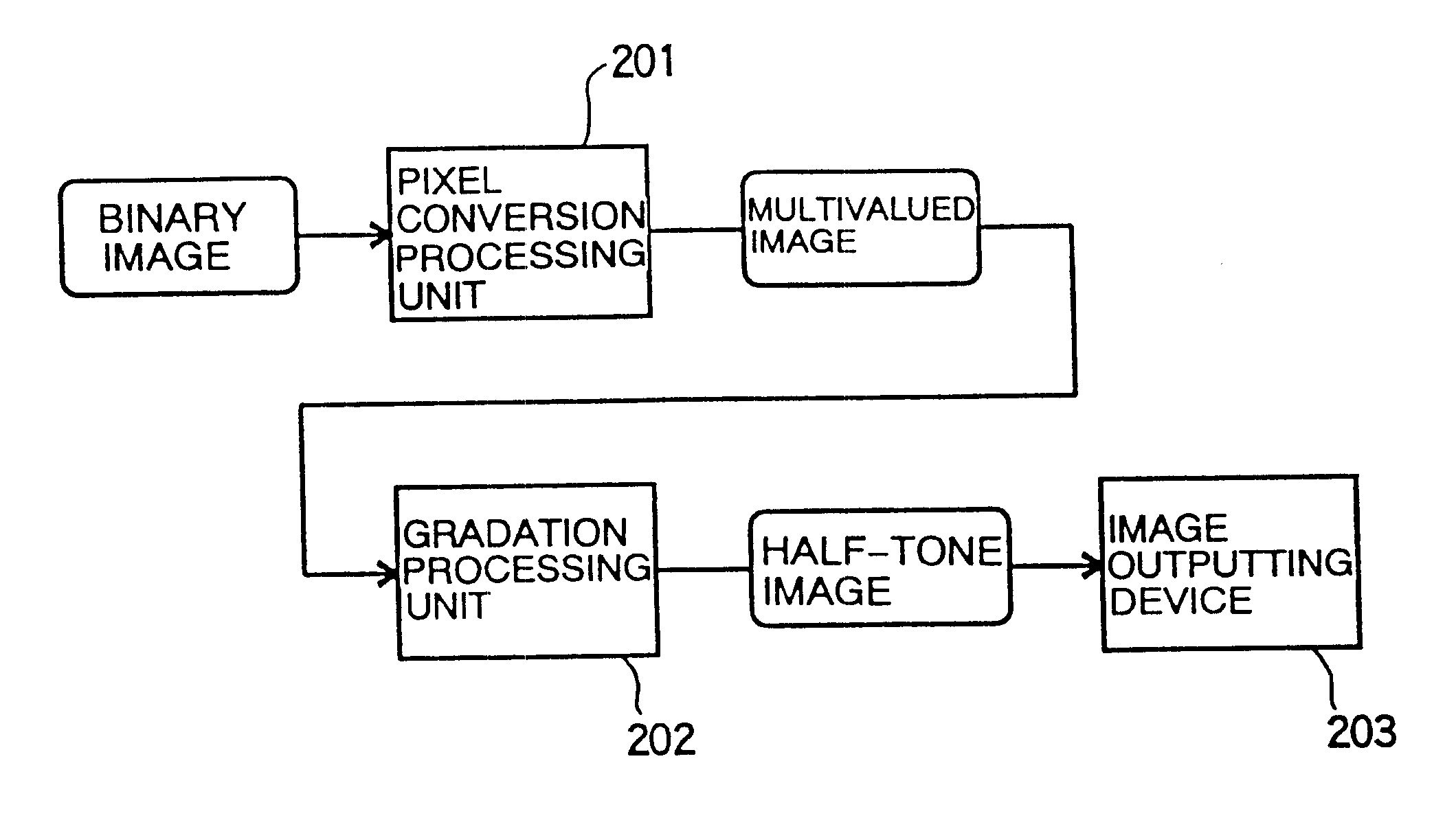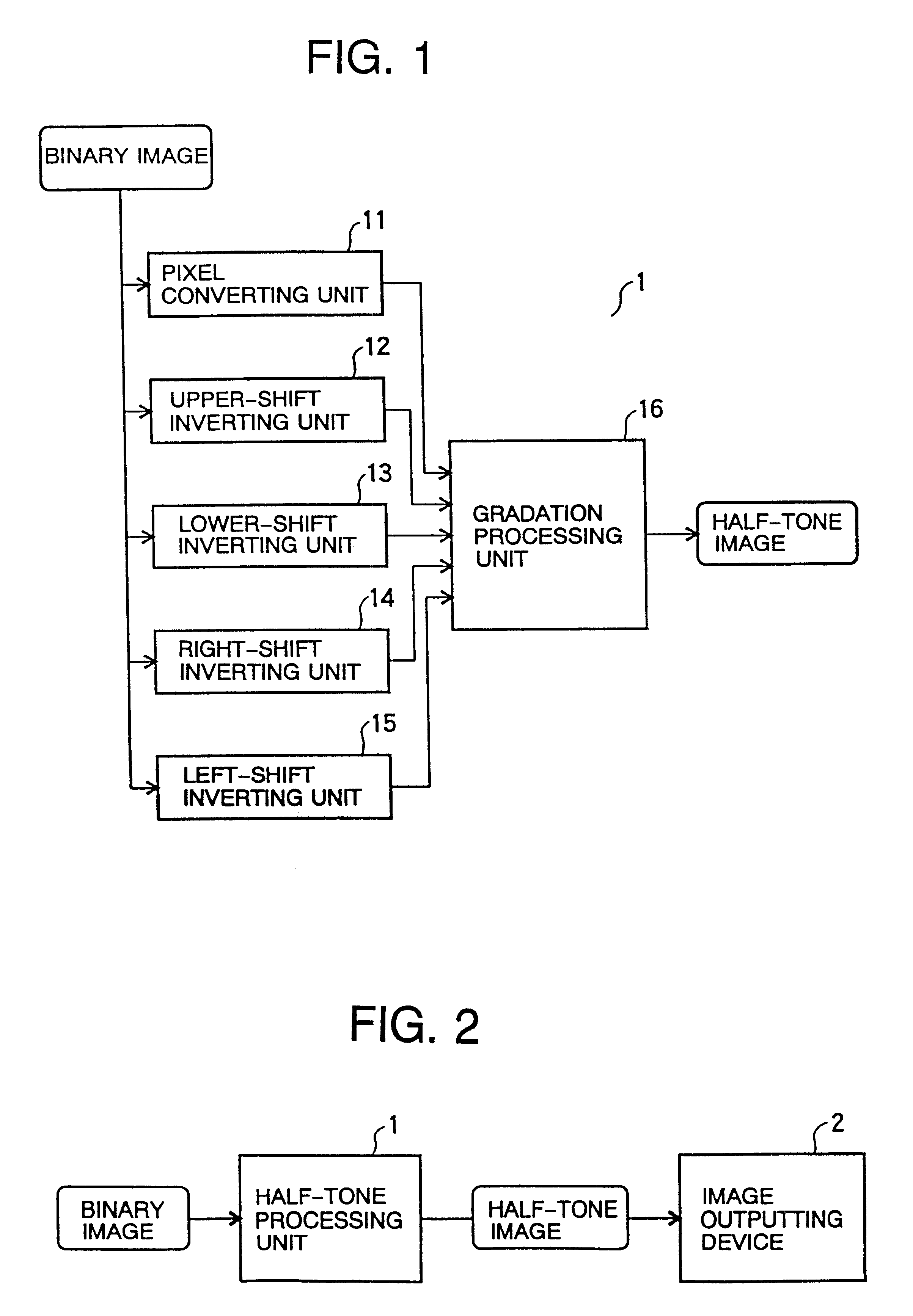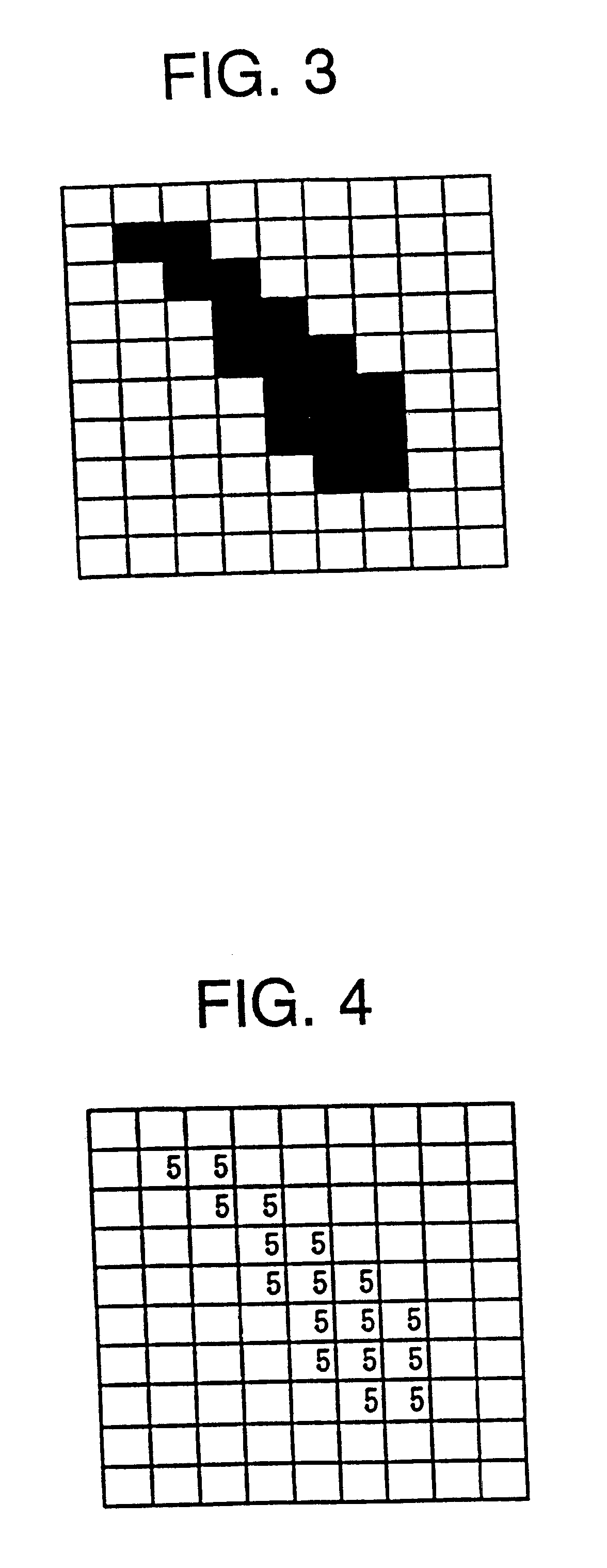Image half-tone processor and method thereof
a half-tone processor and image technology, applied in the field of image half-tone processors, can solve the problems of poor visual recognizability, low resolution of small display devices, and difficulty in visual recognition, and achieve the effect of smooth apparent outline and high visual recognizability
- Summary
- Abstract
- Description
- Claims
- Application Information
AI Technical Summary
Benefits of technology
Problems solved by technology
Method used
Image
Examples
first embodiment
FIG. 1 shows a functional construction of a half-tone processing unit defined as a principal unit of an image half-tone processor in accordance with the present invention.
Such a process can be actualized also by an image processing single-purpose apparatus or by a program provided in the form of being stored on a recording medium such as a CD-ROM, a flexible disk, a magnetic disk and a magneto-optic disk in a computer system capable of treating normal image data.
A half-tone processing unit 1 in FIG. 1 includes a pixel converting unit 11, an upper-shift inverting unit 12, a lower-shift inverting unit 13, a right-shift inverting unit 14, a left-shift inverting unit 15, and a gradation processing unit 16.
The pixel converting unit 11 weights each of pixels constituting a primary binary image. A specific weighting process by this pixel converting unit 11 is that, for example, with a white pixel set to "0" and a black pixel set to "1", "0" is, as it is, allocated to the white pixel, while...
embodiment 2
In the above-mentioned gradation processing unit 1 shown in FIG. 1, the inverted image of the primary binary image is upper- lower- left- and right-shifted, and the subtraction from the weighted multivalued image is executed, thereby forming the half-tone image. The half-tone image may also be, however, formed by subtracting an inverted image shifted in four oblique left-upper-, left-lower-, right-upper- and right-lower-directions in addition to the upper-, lower-, left- and right-directions. This is a second embodiment of the present invention.
FIG. 11 illustrates a functional construction of the half-tone processing unit defined as the principal unit of the image half-tone processor in accordance with the second embodiment of the present invention.
A half-tone processing unit 1A in FIG. 11 includes a left-upper-shift inverting unit 17, a left-lower-shift inverting unit 18, a right-upper-shift inverting unit 19, and a right-lower-shift inverting unit 20 in addition to the pixel conve...
embodiment 3
In the above-mentioned gradation processing unit 1 shown in FIG. 1, the inverted image of the primary binary image is upper- lower- left- and right-shifted, and the subtraction from the weighted multivalued image is executed, thereby forming the half-tone image. The gradation processing unit 1A in FIG. 11 forms the half-tone image by shifting the inverted image of the primary binary image left upward, left downward, right upward and right downward and performing the subtraction from the weighted multivalued image. The half-tone image may also be, however, formed by subtracting an inverted image shifted in totally eight directions containing the four upper-, lower-, left- and right-directions plus four oblique left-upper-, left-lower, right-upper- and right-lower directions. This is a third embodiment of the present invention.
FIG. 18 illustrates a functional construction of the half-tone processing unit defined as the principal unit of the image half-tone processor in accordance with...
PUM
 Login to View More
Login to View More Abstract
Description
Claims
Application Information
 Login to View More
Login to View More - R&D
- Intellectual Property
- Life Sciences
- Materials
- Tech Scout
- Unparalleled Data Quality
- Higher Quality Content
- 60% Fewer Hallucinations
Browse by: Latest US Patents, China's latest patents, Technical Efficacy Thesaurus, Application Domain, Technology Topic, Popular Technical Reports.
© 2025 PatSnap. All rights reserved.Legal|Privacy policy|Modern Slavery Act Transparency Statement|Sitemap|About US| Contact US: help@patsnap.com



